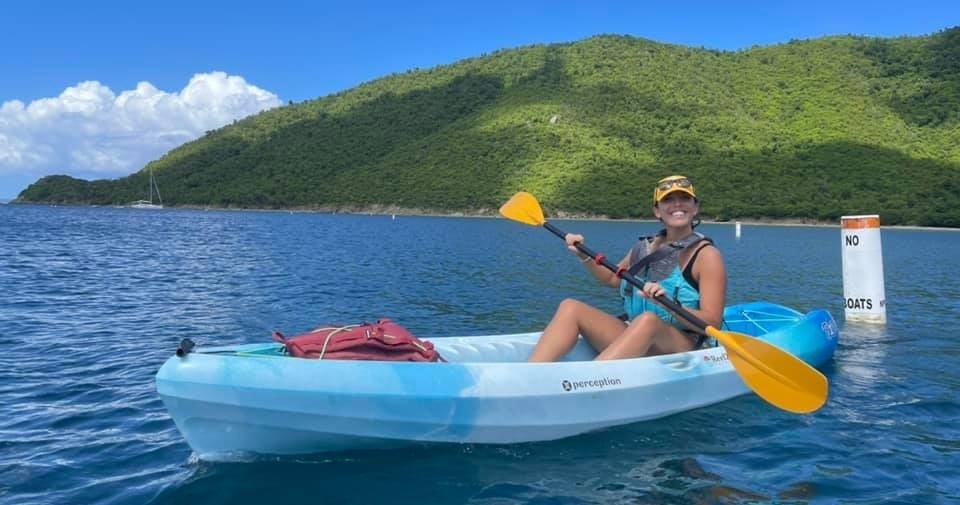Timing Your Kayaking Trip for Optimal Marine Wildlife Sightings
Unlock the best times to kayak along British Columbia’s scenic coastlines for unforgettable marine wildlife encounters. Learn how tides, seasons, and daily rhythms shape your chances of seeing whales, otters, and birds in their natural flow.
Check Tide Schedules in Advance
Plan your kayaking around rising tides, which bring active marine life closer to shore and enhance wildlife sightings.
Wear Layers with Quick-Dry Fabrics
Water temperatures vary even in summer; layered clothing helps regulate body temperature and dries quickly if splashed or paddling through spray.
Bring Binoculars for Distant Wildlife
Marine animals can be far off the coastline; optics help you spot and observe without disturbing their environment.
Respect Wildlife Distances
Keep at least 50 meters away from marine mammals to avoid stress or disturbance, ensuring safety for both you and the animals.
Timing Your Kayaking Trip for Optimal Marine Wildlife Sightings

East End Kayaking Excursion
Ages 6+ • 3 Hours
Discover the tranquil beauty of St. John's coastline with a private kayaking adventure on the East End. Paddle past vibrant reefs, explore hidden coves, and immerse yourself in the Virgin Islands' stunning waters with Reef2Peak.
Kayaking along coastal waterways is an invitation to engage directly with marine life at its most vibrant. The ebb and flow of tides wake up the underwater world, coaxing seals from their rocky perches and sparkling schools of fish across sunlit shallows. Your timing shapes the wildlife encounters—paddle at dawn when sea otters forage, or late afternoon when bald eagles hunt the wind currents.
Choosing the Right Season sharpens your chances. Spring and early summer bring migratory whales passing through, while fall's cooler waters gather dense schools of forage fish, attracting larger predators. Winter’s chill drives some species deeper but opens quiet waterways where birdlife dominates the scene.
Daily Timing and Tides matter more than you might expect. Kayaking during the rising tide delivers nutrient-rich currents that marine creatures follow—plan to launch an hour before high tide for active wildlife. Conversely, low tide exposes tidal pools offering glimpses of starfish, crabs, and clams.
Location and Weather interplay with timing. Coastal bays often hold calmer waters and reliable wildlife sightings, while exposed coastlines challenge your skills but reward with dramatic encounters like breaching whales. Wind conditions can limit visibility and safety—check forecasts and plan your trip during calm weather windows.
Practical preparation ensures your adventure stays safe and smooth. Waterproof gear, layered clothing, and reliable navigation tools keep you comfortable and aware of changing conditions. Carry binoculars for spotting distant wildlife and a camera with a zoom lens for capture without disruption.
Above all, respect the fiercely independent rhythms of nature. Paddle gently so curious seals and playful dolphins decide the moment of approach. A well-timed kayaking trip becomes more than exercise or sightseeing—it’s a dynamic conversation with the sea and its creatures, a shared moment where you move with the ocean’s pulse, not against it.
Nearby Trips
All Adventures
Boat Charters
Water Activities
Adventures near Victoria
Discover the unique and memorable adventures that make Victoria special.
Frequently Asked Questions
When is the best time of day for spotting marine mammals while kayaking?
Early morning and late afternoon offer the most active wildlife periods. Animals take advantage of calmer water conditions and favorable light to feed and socialize.
How can I minimize my impact on marine wildlife during my trip?
Maintain a respectful distance, avoid loud noises, and never chase or try to touch animals. Use a paddle quietly and educate yourself on local guidelines for wildlife interactions.
What safety measures should I take regarding tides and currents?
Study local tide charts and plan your launch accordingly. Understand how currents flow in your area, and always communicate your route and estimated return time to someone on shore.
Are guided tours recommended for first-time kayak wildlife watching?
Yes, guides provide local knowledge, navigation expertise, and ensure safety, making your wildlife experience richer and less stressful.
What local wildlife might I unexpectedly encounter beyond whales and seals?
Keep watch for harbor porpoises, river otters, eagles, and various shorebirds. Seasonally, even sea lions and porcupine stars can appear near shallow reefs.
Can I kayak year-round in this region?
Yes, but conditions vary widely. Winter requires advanced preparation and gear. Spring through fall offer safer and more comfortable experiences with increasing wildlife activity.
Recommended Gear
PFD (Personal Flotation Device)
A mandatory safety item that keeps you buoyant and confident on the water.
Dry Bag
Protects food, electronics, and essentials from spray or unexpected rain.
Layered Clothing with Waterproof Shell
Keeps you warm and dry; adaptability to weather shifts is key.
Binoculars
Enhances distant wildlife observation without approaching too closely.
Local Insights
Hidden Gems
- "The tidal pools along East Sooke Park coastline reveal small crabs and anemones at low tide."
- "Chatham Islands offer quiet kayak routes with frequent eagle sightings."
Wildlife
- "Harbor seals sunbathe on rocky shores mid-morning."
- "Migration corridors bring transient orca pods through the San Juan Channel nearby."
History
"Coastal waters here hold significance for indigenous peoples, who have long respected the rhythms of the sea and its creatures. Traditional knowledge informs respectful interaction with marine life to this day."

